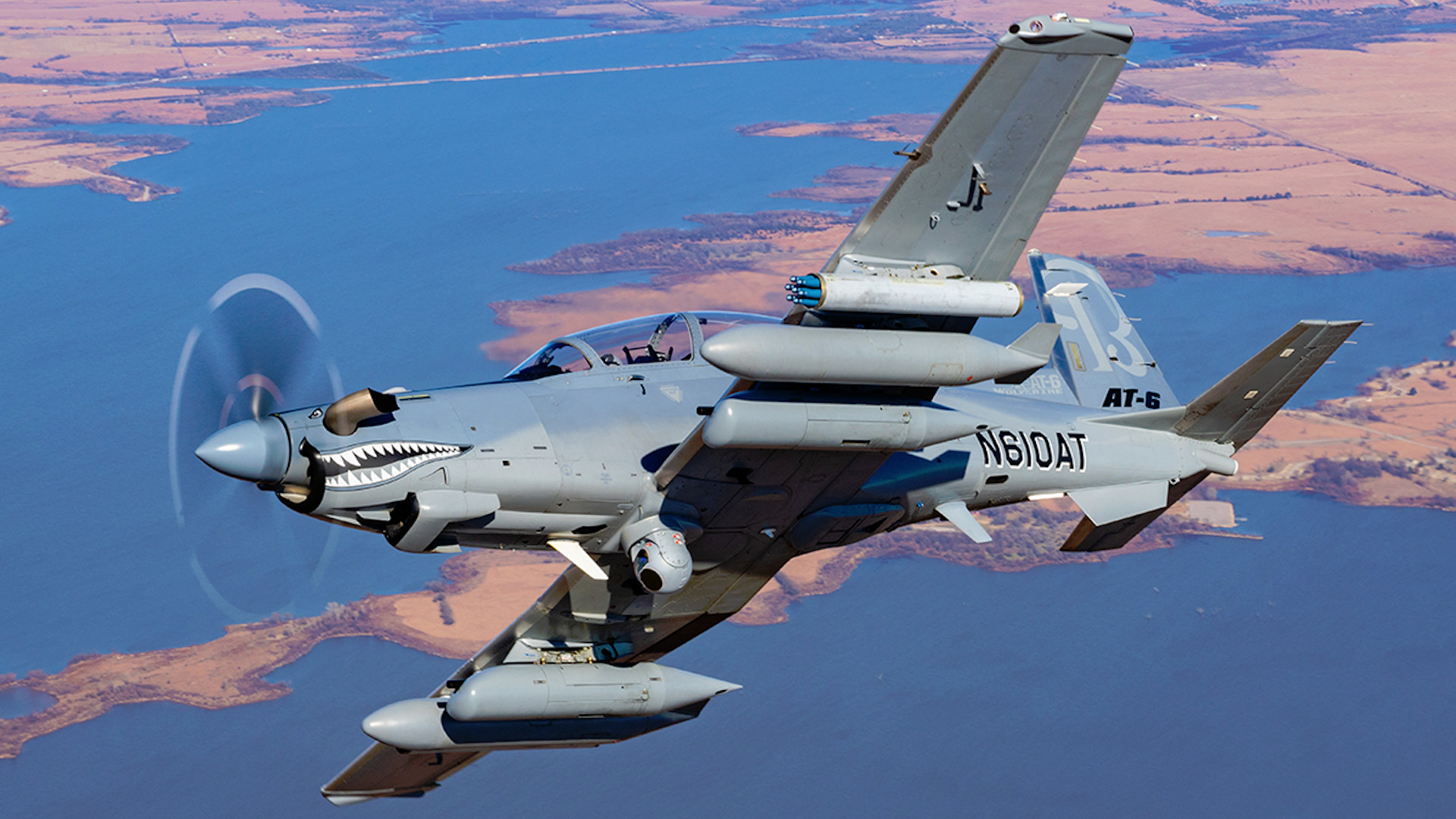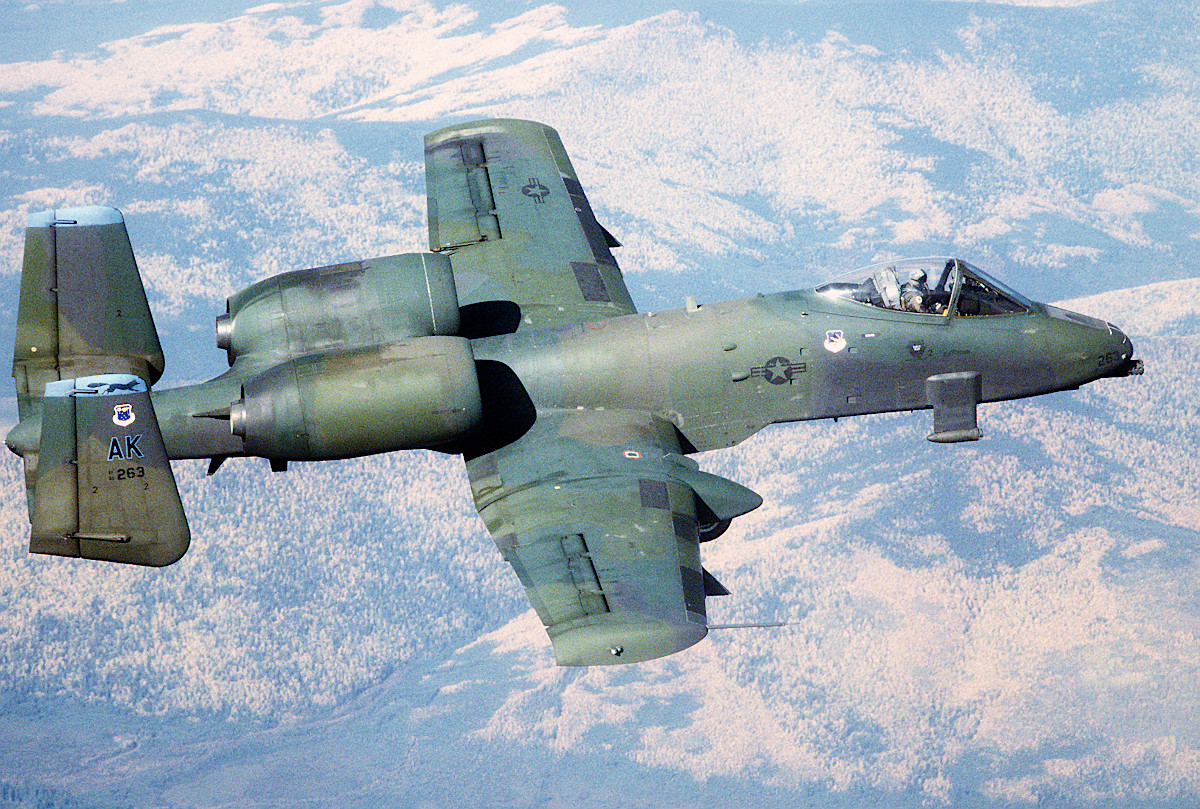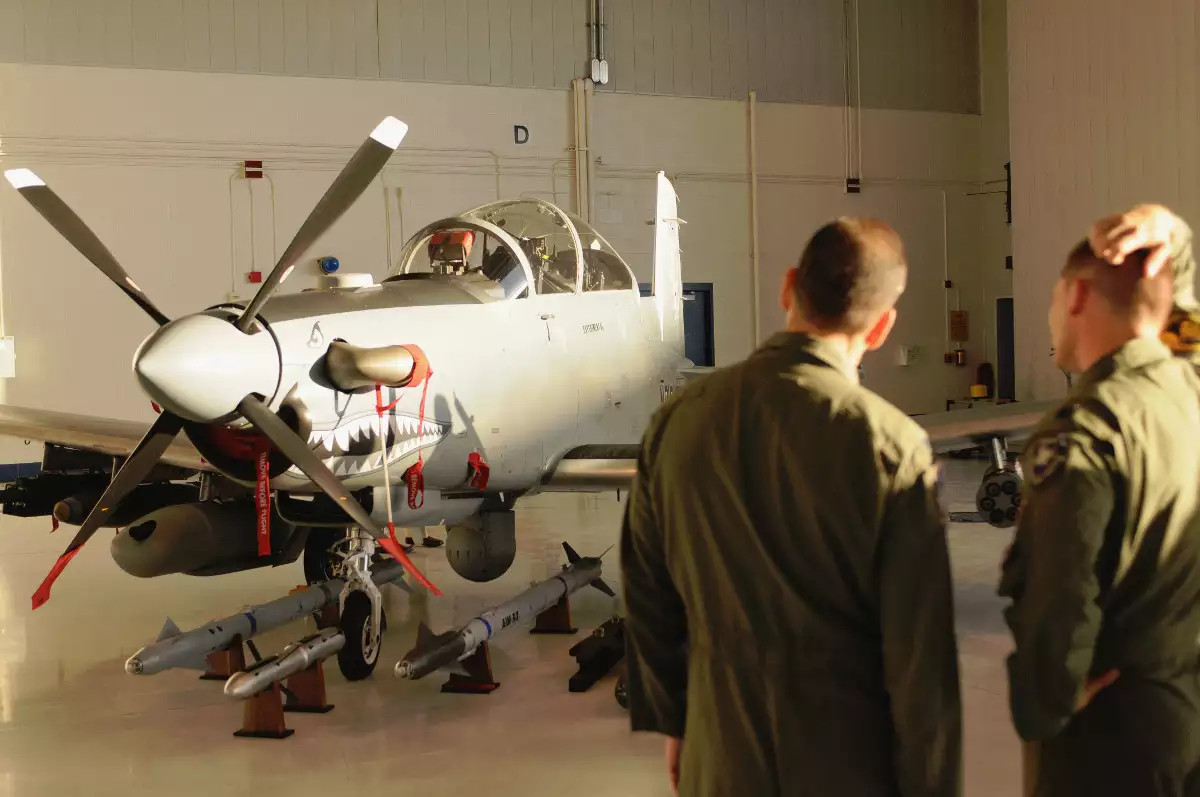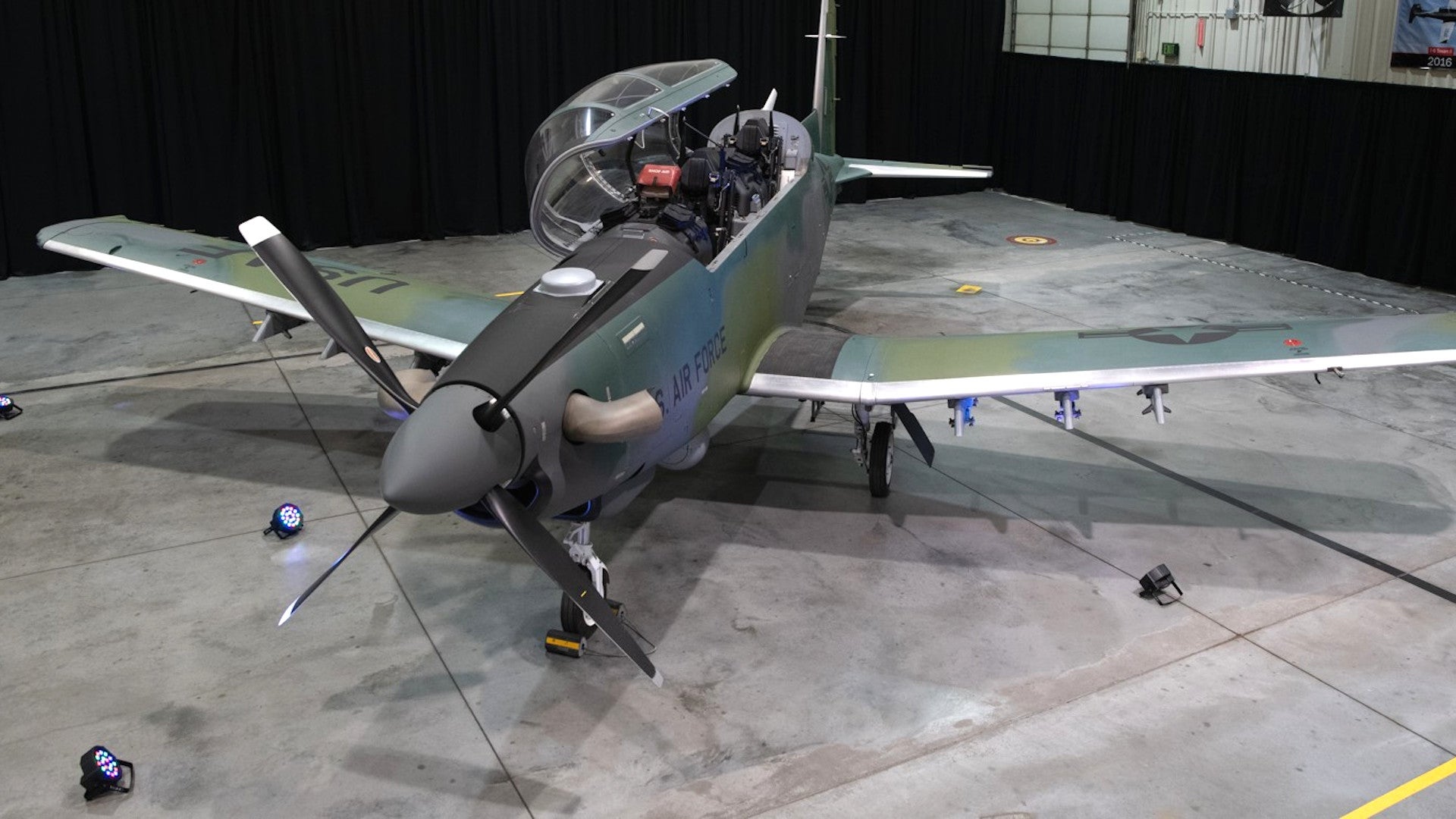The U.S. Air Force has taken delivery of its first Beechcraft AT-6E Wolverine single-engine turboprop light attack aircraft. The service has said in the past that it could acquire up to three of these aircraft to support a program called the Airborne Extensible Relay Over-Horizon Network, or AEROnet, focused on developing a low-cost communications and data-sharing architecture to help allies and partners work together better during coalition operations.
The Air Force Life Cycle Management Center (AFLCMC) based at Wright-Patterson Air Force Base in Ohio, announced the arrival of the AT-6E on Feb. 17, 2021. The AT-6E is a variant of the T-6 Texan II trainer from Beechcraft, a division of Textron, configured for light attack and intelligence, surveillance, and reconnaissance (ISR) missions. The Air Force, as well as the U.S. Navy and the U.S. Army, already operate unarmed versions of the Texan II.

“A new aircraft just entered the @usairforce fleet!,” a post from AFLCMC’s official Twitter account said. “Congrats to our Fighters and Advanced Aircraft Directorate’s Light Attack Aircraft Program Office, for leading efforts to acquire and field @TextronAviation’s AT-6 Wolverine!”
“Making history in the Air Capital of the World — Congratulations to @usairforce for receiving its first @Beechcraft AT-6E Wolverine,” Textron’s Twitter account wrote in response.
The most immediately visible difference between the AT-6E, which Beechcraft has marketed in the past as the AT-6B, AT-6C, or simply the AT-6, and standard Texan II trainers are its six underwing pylons. These can accommodate various precision-guided bombs and missiles, as well as rocket and gun pods, among other stores.
It has an additional station under the fuselage, which is typically occupied by a sensor turret containing electro-optical and infrared cameras. The Air Force’s model reportedly has a WESCAM MX-15D turret, which also includes a laser designator, from L3Harris.

The AT-6E that the Air Force just received also has a prominent circular antenna on top of its nose typically associated with satellite communications systems. “The aircraft features an impressive array of communication capabilities with ARC-210 radios/VHF/UHF/AES Encryption/SATCOM/Iridium Cell Satellite/AERONet/Full motion ROVER video/GPS precision approach and more,” according to a piece from The Aviationist last year. That same story said the aircraft had the same mission computer as the Air Force’s A-10Cs and hands-on-throttle-and-stick (HOTAS) controls derived from those on F-16 fighter jets.

This particular AT-6E interestingly has a green-and-gray paint job that appears to be at least inspired by a pattern known as European One. Many Air Force aircraft, including A-10 ground attack jets, wore this camouflage scheme during the latter stages of the Cold War and immediately afterward.


The Air Force announced that Air Combat Command (ACC) could get as many as three AT-6s to support work on AEROnet in 2019 and that system is the centerpiece of these aircraft. “Think of the partner nations that wouldn’t necessarily be allowed to have Type 1 encryption, which is the encryption we have in Link 16 and things like that, but we still need to build our coalition,” then-Air Force Brigadier General Michael Schmidt, the Program Executive Officer for Command, Control, Communications, Intelligence, and Networks at AFLCMC, said at a conference in 2019. Schmidt has since been promoted to Major General.
“What can we offer in a network that is exportable, that meets all the security requirements that can interlink people with each other and with us, that can take advantage of all the different communication systems that are out there already,” now-retired Air Force General Mike Holmes, then head of ACC, said at the same event. “You’re offering a network that has airplanes, too, that fit in with it and not, here’s a big airplane, now go figure out how you’re going to talk to it and how you’re going to use it.”
It’s worth noting that this is not the first time the Air Force has experimented with an AT-6 variant. The service has tested these aircraft on multiple occasions as part of various programs stretching back more than a decade now. The decision to buy Wolverines for the AEROnet tests followed on from an abortive effort that began in 2017, which was intended to pave the way for the acquisition of hundreds of low-cost light attack aircraft. The goal of that project was to reduce the strain on higher-end combat jet fleets and provide more persistent, flexible, and cheaper firepower to support operations in permissive environments. You can read more about this entire saga, and past failed Air Force light attack program, in detail in this past War Zone piece.

The cancellation of that Light Attack Aircraft (LAA) program also led into a plan to get up to three Embraer A-29 Super Tucanos via the U.S.-based Sierra Nevada Corporation for Air Force Special Operations Command (AFSOC). AFSOC would then use those single-engine turboprop light attack aircraft to help Combat Aviation Advisors, who are themselves tasked with training and advising foreign air forces. A number of American allies and partners already operate, or are planning to operate, both the A-29 and the AT-6.
It’s unclear whether AFSOC is still pursuing that acquisition effort or not. That command has also been trying to acquire new light attack/ISR aircraft that it could use to support lower-end counter-terrorism and similar operations as part of a program called Armed Overwatch. Last year, Congress blocked its request for funds to begin buying planes to meet those requirements in the 2021 Fiscal Year. However, AFSOC Commander Air Force Lieutenant General James Slife said just recently that he is optimistic that legislators can be convinced to allocate money for this project in the next fiscal cycle.
No matter what happens with AFSOC’s Armed Overwatch program in the next year or so, the Air Force does now have its first AT-6E to begin supporting the AEROnet project.
Contact the author: joe@thedrive.com
